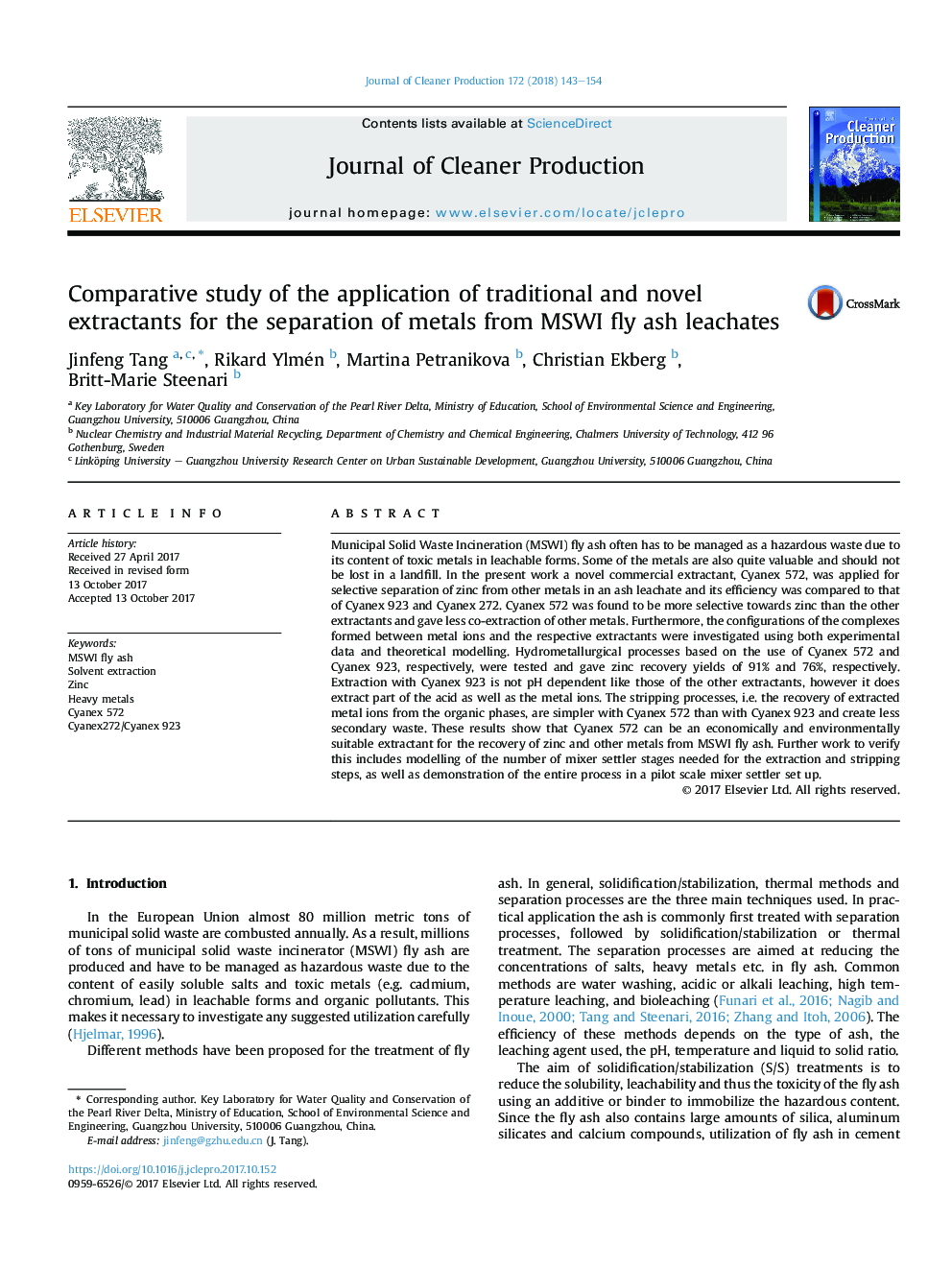| Article ID | Journal | Published Year | Pages | File Type |
|---|---|---|---|---|
| 8099778 | Journal of Cleaner Production | 2018 | 12 Pages |
Abstract
Municipal Solid Waste Incineration (MSWI) fly ash often has to be managed as a hazardous waste due to its content of toxic metals in leachable forms. Some of the metals are also quite valuable and should not be lost in a landfill. In the present work a novel commercial extractant, Cyanex 572, was applied for selective separation of zinc from other metals in an ash leachate and its efficiency was compared to that of Cyanex 923 and Cyanex 272. Cyanex 572 was found to be more selective towards zinc than the other extractants and gave less co-extraction of other metals. Furthermore, the configurations of the complexes formed between metal ions and the respective extractants were investigated using both experimental data and theoretical modelling. Hydrometallurgical processes based on the use of Cyanex 572 and Cyanex 923, respectively, were tested and gave zinc recovery yields of 91% and 76%, respectively. Extraction with Cyanex 923 is not pH dependent like those of the other extractants, however it does extract part of the acid as well as the metal ions. The stripping processes, i.e. the recovery of extracted metal ions from the organic phases, are simpler with Cyanex 572 than with Cyanex 923 and create less secondary waste. These results show that Cyanex 572 can be an economically and environmentally suitable extractant for the recovery of zinc and other metals from MSWI fly ash. Further work to verify this includes modelling of the number of mixer settler stages needed for the extraction and stripping steps, as well as demonstration of the entire process in a pilot scale mixer settler set up.
Related Topics
Physical Sciences and Engineering
Energy
Renewable Energy, Sustainability and the Environment
Authors
Jinfeng Tang, Rikard Ylmén, Martina Petranikova, Christian Ekberg, Britt-Marie Steenari,
